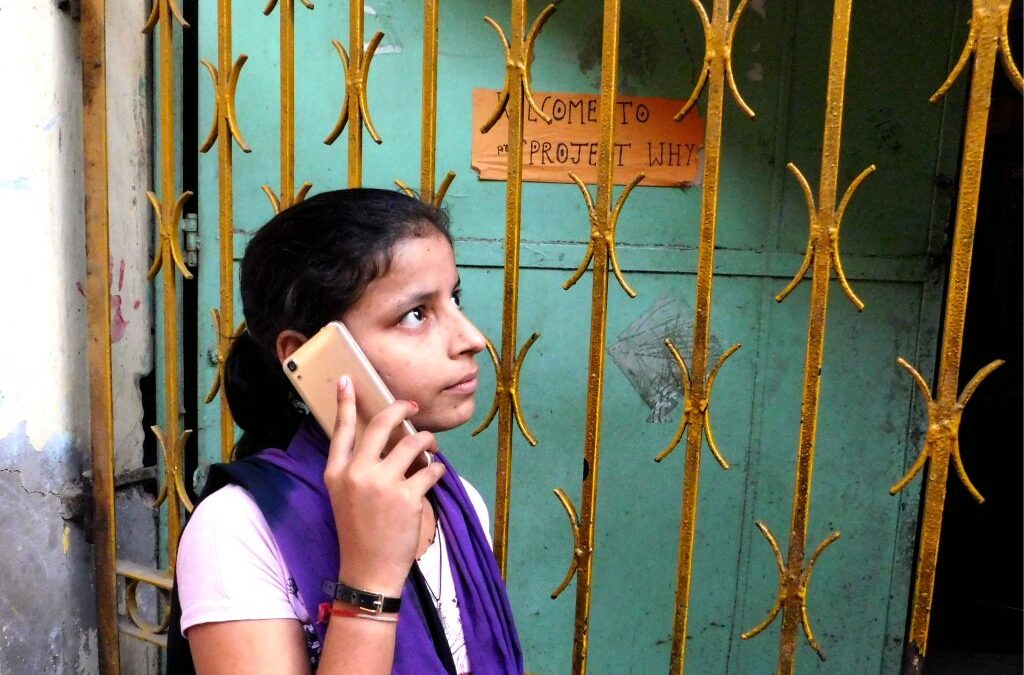
by anouradha bakshi | Oct 25, 2016 | Uncategorized
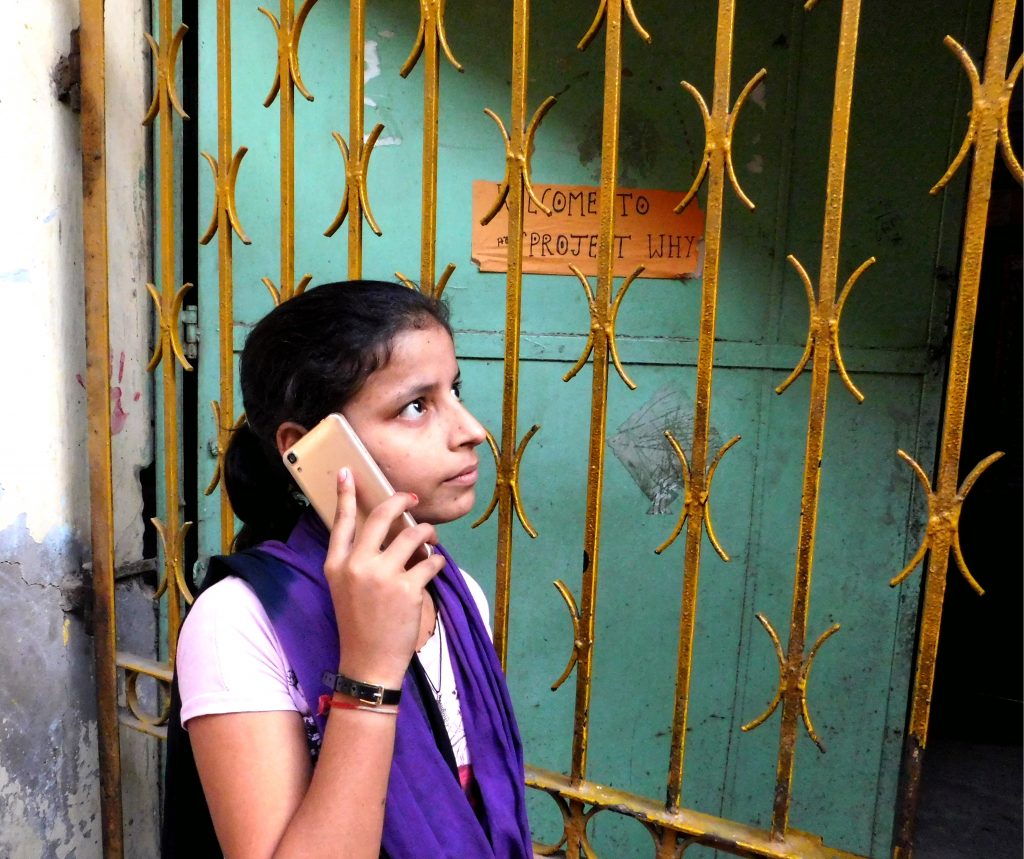 An interesting article appeared in the Wall Street Journal recently. It is entitled: Why the Vast Majority of Women in India Will Never Own a Smartphone. The emerging new middle class will purchase all sorts of things ranging from washing machines to even air conditioners but would not buy a smart phoneA for their daughters. The fear is a love marriage, something unacceptable to many families. Patriarchy supersedes technology.
An interesting article appeared in the Wall Street Journal recently. It is entitled: Why the Vast Majority of Women in India Will Never Own a Smartphone. The emerging new middle class will purchase all sorts of things ranging from washing machines to even air conditioners but would not buy a smart phoneA for their daughters. The fear is a love marriage, something unacceptable to many families. Patriarchy supersedes technology.
Statistics are glaring: 114 million more men own cellphones than women. Once again women are denied the benefit of one of the greatest technological leap of our times. Smartphones are not just love machines; they have become an essential tool in our day and age and more than that are a great social leveller. They can help learn, increase skills, communicate better and above all increase their safety when they are out of the homes. But the fear is so deep seated that in rural areas village councils bar unmarried girls from possessing a cellphone.
The whole matter lies on the skewed view of placing the family’s honour on the tender shoulders of the girl child. An aberration!
Even those meant to protect us are quick to blame the woman for crimes like rape and even the ubiquitous cellphone as was the case a few years ago. when a police officer said: western culture, mobile phones and lack of entertainment as reasons for rape. Still trying to decipher the meaning of these words.
The question that begs to be asked is why is no one willing to address the cause and take measures to eradicate it. The bandaid solutions that are too often proffered are always steeped in gender bias. It takes two to tango, but in these cases only one is reprimanded.
From the day she is born, the girl child is treated differently at every step. She has one reason to celebrate at least she is not one that was killed in the womb as is sometimes the case. From the day she is born her life is decided by the men of the families she will ‘belong’ to: father, brother, husband and in her twilight years son and so are her choices.
Today it is the smartphone. God knows what it will be tomorrow.
In 2005 a letter was written to a girl who died in the in the womb. It ended wit these words:
Who are you: a statistic in the records of the hospital, a pain in the heart of many that will slowly fade away, a regret, a topic of discussions with its share of ‘ifs’ and ‘buts’… I do not know..
To me you are the little girl who refused to be born in a world that she felt was not worthy of her… a child who took her one and only independent decision..
And we abide by it…

by anouradha bakshi | Oct 25, 2016 | Uncategorized

Way back in December 2007 we celebrated Xmas at the women centre. One of our resident at the women shelter was Christian and she told us about the cakes her mom made and we ordered many for the party. Sophie one of our volunteers wanted a full scale celebration so there was a Xmas tree and all other decorations as well as pictures of Santa and gifts of course.
The children however were not Christians but mostly Muslims with a scattering of Hindus and it was left to me to make the link that would make sense to the kids. The kids got it as they always do: treats! Ladoos on Hindu days, vermicelli pudding on Muslim day and cakes at Xmas. As simple as that.
Festivals are about food.
Recently I was shown another side of the religious food story courtesy a wonderful volunteer of Indian origin who has always lived away from this land but whose family has followed traditions by simply adapting them. In their community you eat seven vegetables on Diwali. The hitch is that no one really likes a vegetable curry. What do you do? You take your kids’ favourite food and adapt it: enter the seven vegetable pizza, the family’s answer to traditions.
To me it was more than a ‘story’ that brings a huge smile to one’s face. This pizza held the true essence of the Hinduism I was brought up in and which embraces all and adapts to any situation.
Maybe we will have a seven vegetable pizza for Diwali this year!
Thank you Viren!
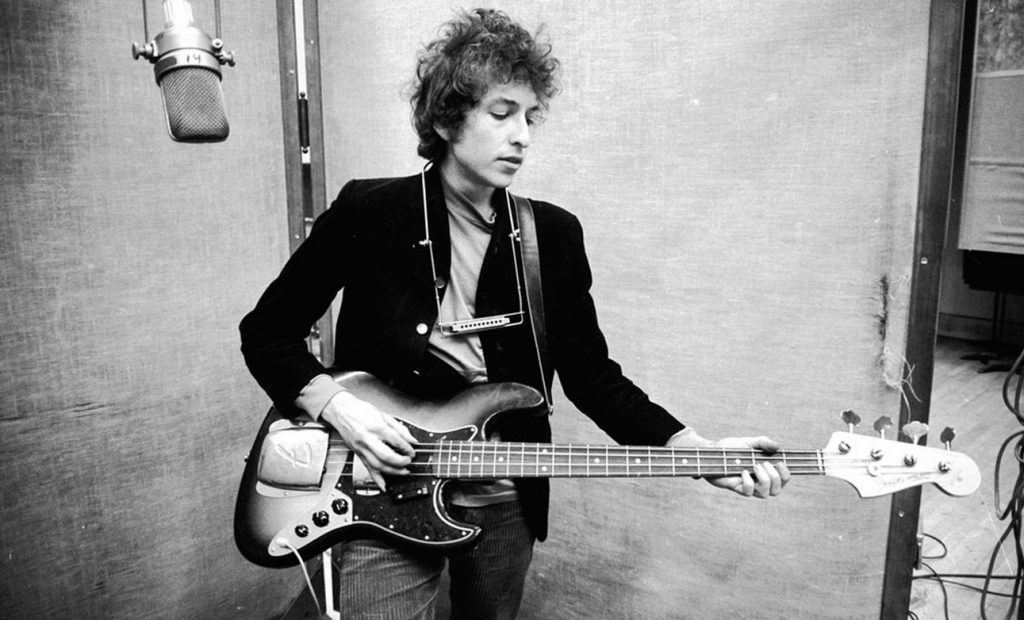
by anouradha bakshi | Oct 20, 2016 | Uncategorized

The news of Bob Dylan getting the Nobel Prize for Literature was one of the best news coming my way in a long time. For those of us who were young and impressionable in the sixties Bob Dylan was an intrinsic part of our lives.
I write this slightly personal note today as I want young people to know how deeply we were influenced by song and poetry and how important it was to us. Let us call it serendipity, but a few hours before I heard the news I was telling a young man how ‘dating’ in our time meant sitting in a park reading poetry or singing Dylan songs. In those days music was heard on turntables and the more you liked a record, the more scratched it became but who cared. Those vinyls in their soon tattered covers were our prize possessions.
Dylan was more than a song to listen. His poignant and hard hitting words use to lead to heated debates that moulded our pliable minds and the adults we became were definitely influenced by this incredible poet.
What is amazing though is that hearing his words today, half a century later are still as meaningful as they were then.
In those days we believed we could remake the world into a happy and peaceful and it was the age of the flower children and the hippies on a soul journey. That did not happen.
Today the world is the antithesis of what we had dreamt. And never before have Dylan’s words rung more true.
Yes, and how many times must a man look up
Before he can see the sky?
Yes, and how many ears must one man have
Before he can hear people cry?
Yes, and how many deaths will it take ’till he knows
That too many people have died?
The answer, my friend, is blowin’ in the wind
The answer is blowin’ in the wind
Bob Dylan 1963
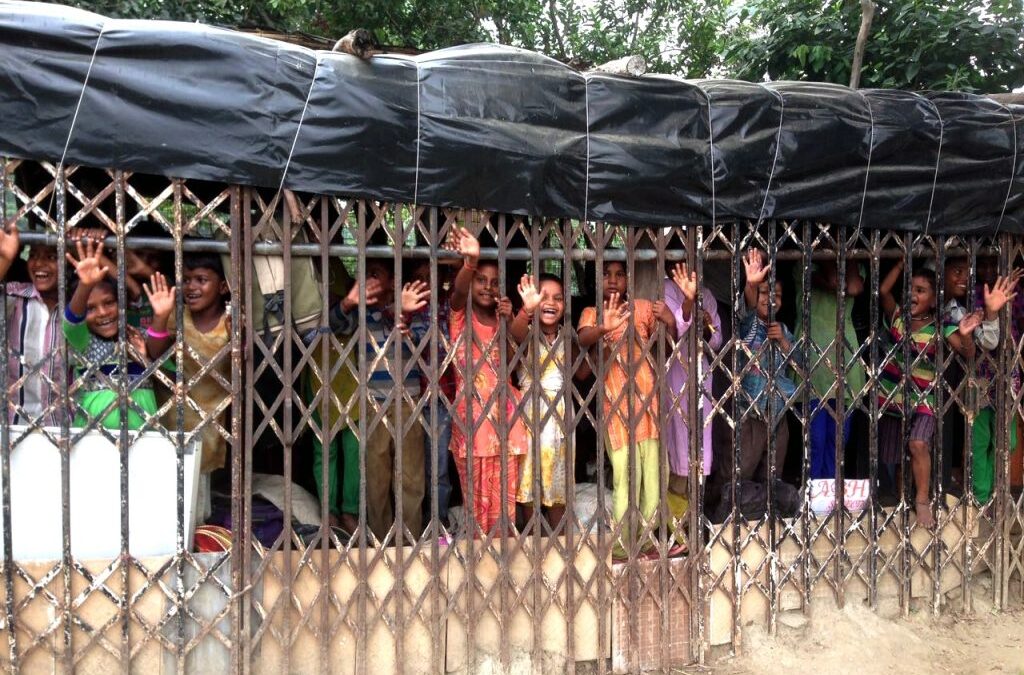
by anouradha bakshi | Oct 18, 2016 | Uncategorized
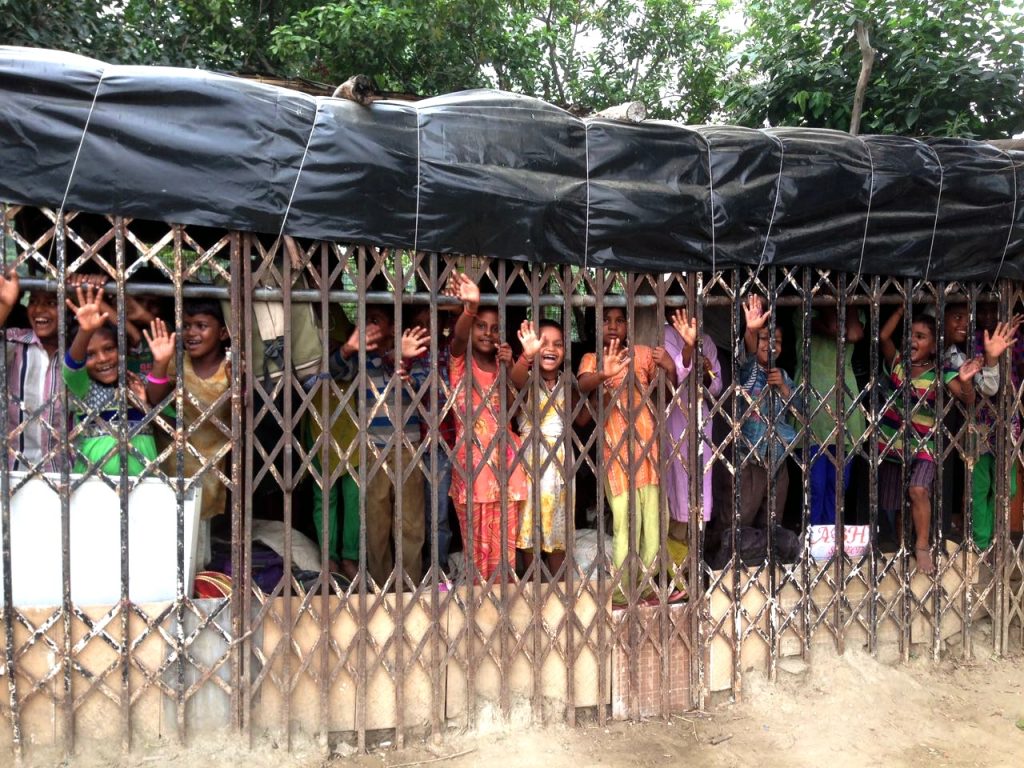
Don’t go by the picture! These kids are the luckiest as they live on the bank of the river in the middle of green vegetable patches and breathe good clean air, or at least the best available in our capital city.
For the others the invisible bars of polluted air are slowly appearing and will soon incarcerate us all for the months to come.
You guessed right! Air pollution is on its way. WHO has just confirmed that Delhi’s air is the worst of all megacities. Fine particulate matter is already four times more than what is acceptable.
That the situation is critical is obvious but to put matter in perspective here is a fact: India’s capital was the only megacity to record a PM10 level above 200 µg/m³, exceeding the WHO air quality standard of 20 µg/m³ by more than 900 per cent.
The monsoons have gone and with it blue sky and breathable air. For the past few days a grey lid covers the city and no, its is not rain clouds. In some areas farmers have begun to set harvested fields on fire, construction sites are thriving and in a few days festive celebrations will begin and firecrackers will burst with impunity. And then as winter comes small fires will be lit to keep warm, more fields will be set on fire, cars will rev in the traffic and the smoke of industrial chimneys will add to the toxic cocktail. And we will be breathing this air as we have no choice.
Or do we?
We all know that the air is polluted, that water is scarce and so on but how many of us take any remedial measures. The rich will buy air purifiers and soon the poor will too as prices are coming done. Market forces!
Is it not time to stop looking for bad aid solutions and do something for mother Nature.
Easier said than done as the fight is somewhat skewed. Talk of firecrackers and it is all brought down to mores and tradition, and what about the fire to warm yourself. When you live on the street then that is the only way you can beat the biting cold. For farmers it is easier to set fire on the land than painstakingly pullout old roots.
Air pollution has dangerous effects on humans, animals and plants. It leads to heart and lung disease, global warming, acid rain and more. Children are the most affected. Children from urban slums suffer the most as they rarely take a break and get to breathe clean air.
The problem with the solutions are that they require life style changes that many are not willing to adopt: take the bus or the metro instead of your car, switch off lights and appliances you are not using.
Some measures are impossible because of no availability of safe infrastructure. One would love to walk but where are the pedestrian walks, one could cycle to work but where are the cycle tracks. It is said that if water is sprayed regularly on roads and construction sites there would be a change in the air quality, but this again is Catch 22 itself as water is scarce and precious.
Most of these solutions are not in our hand as they involve government and administration.
At Project Why we believe that the first thing is to make children aware of the critical situation that exists and then inform them about the ways to curb air pollution so that even if they cannot do things they can become Warriors of Air.
Some of the steps they can participate in are: segregation of garbage. asking their families not to take motorbikes for short distance errands, learn to recycle and reuse, convert garbage into compost, switch off lights, etc.
Let us not forget that it is children who suffer the most. 4.4 million children in Delhi already have irreversible lung damage. So if not for us we have to think of the children and their tomorrow.
It is only when we ALL accept to become Warriors of Air that things will change.

by anouradha bakshi | Oct 11, 2016 | Uncategorized
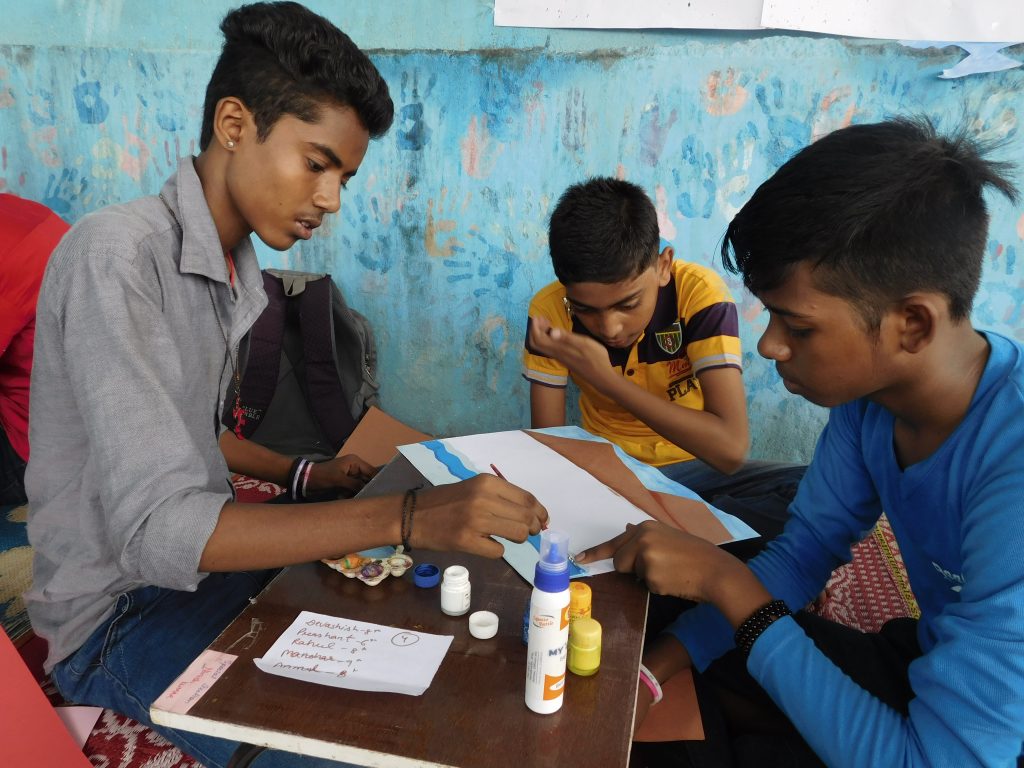 Two weeks ago, two class XII students murdered their teacher. The reason: he expelled one of them for poor attendance. Rage, anger, frustration? Nothing can condone violence of this kind and the boys will face the law.
Two weeks ago, two class XII students murdered their teacher. The reason: he expelled one of them for poor attendance. Rage, anger, frustration? Nothing can condone violence of this kind and the boys will face the law.
The question that begs to be asked, though few will, is: who is responsible for this brutality and the answer may not be as easy as one would like to believe.
This extreme action should compel us to look at reality in the face. The two boys were school going and had studied hard enough to reach class XII. They were not one of the (ill)famed dropouts.
That any child would resort to such abhorrent violence must lead us to look at the present education system and social environment our young live in particularly in urban slums. This post is not meant to justify the act but prevent it in days to come as violence and aggression are an intrinsic part of the DNA of underprivileged children.
Education is undoubtedly the one tool that shapes mind and thus life. School should be an enabling environment where every child blooms according to her or his capabilities and talent. Education goes far beyond three Rs.
At Project Why we have always believed in Jacques Delors definition of education, namely his four pillars of learning: learning to learn, to do, to be and to live with others. Sadly education as we know it stops at the first.
One of the reasons of setting up Project Why was to address a unnatural reality: the half day school system whereby boys go to school post lunch. The school is for girls in the morning. Boys are left to their own device as their homes are tiny and so the street becomes their realm. With no quality parental control they are left to themselves. Bunking school becomes easy and as they grow the transformation between child and bad element is bound to happen. What we forget is that we are a part of the terrible mutation.
That they should be aggressive and even violent is again to be expected. Child physical abuse is rampant in both homes and school and becomes the only tool they know. No one talks to them or asks them their point of view. Communication is one-way from adult to child and they have no voice. So where do they learn to be and live with others.
We once asked a group of secondary students who were regularly beaten in their school what was the one thing they would change if given a chance and ALL of us would have bet our bottom dollar that the answer would be physical abuse. We were astounded when they told us that they would give the child a chance to explain himself before beating him. Beating was par to the course. What they wanted his a voice.
Children need to be heard. Children need to be recognised as individuals. Children need to be respected. Their talents need to be discovered and honed. They need to be given means to vent their anger and emotions. If the two boys who now will spend years in a brutal jail had been taught better then three lives would have been saved.
It is time we took responsibility and acted. Education reforms are needed but again they have to be the right ones, the kind that helps every child to grow to her or his full potential.
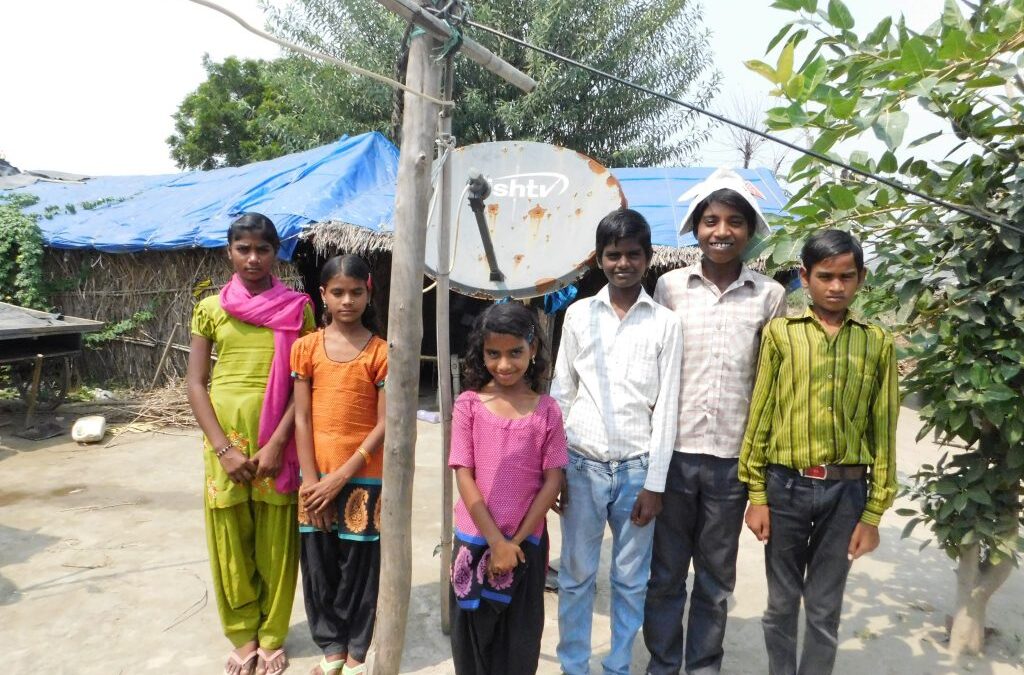
by anouradha bakshi | Oct 4, 2016 | Uncategorized
All television is educational television. The question is: what is it teaching? wrote Nicholas Johnson.
Television is the most ubiquitous object as it breaks all social barriers and finds its way in every nook and corner of the land. Satellite dishes dot the most unlikely roof tops from crowded slums to the thatch homes of the agricultural labour tending to vegetable fields.
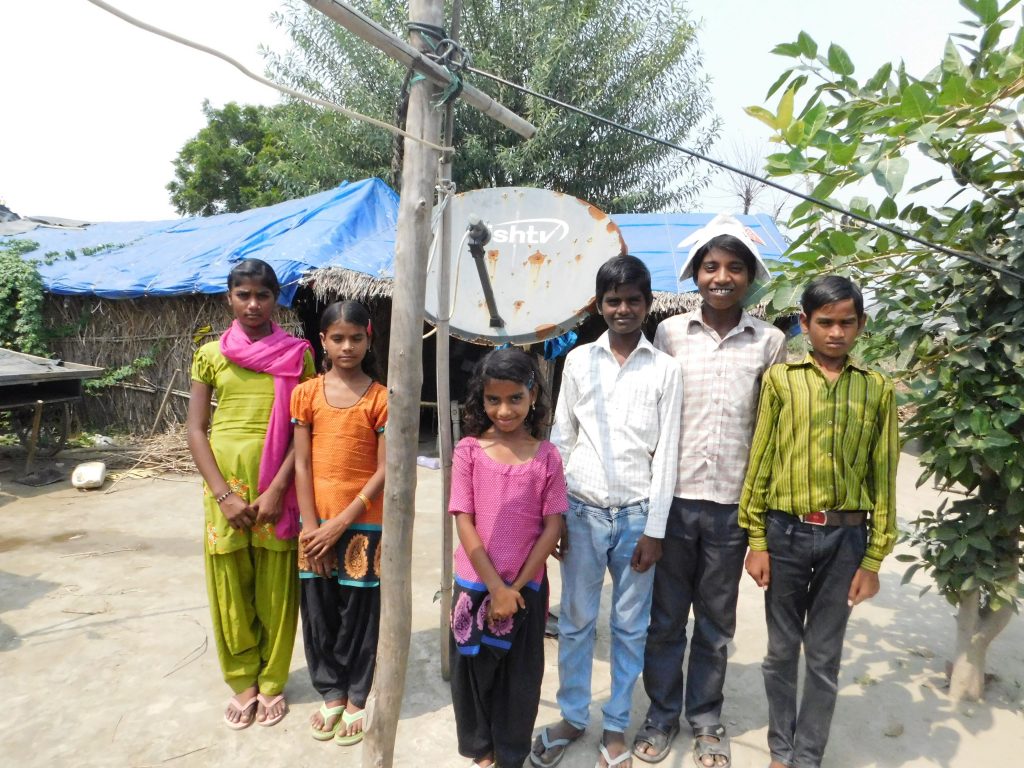
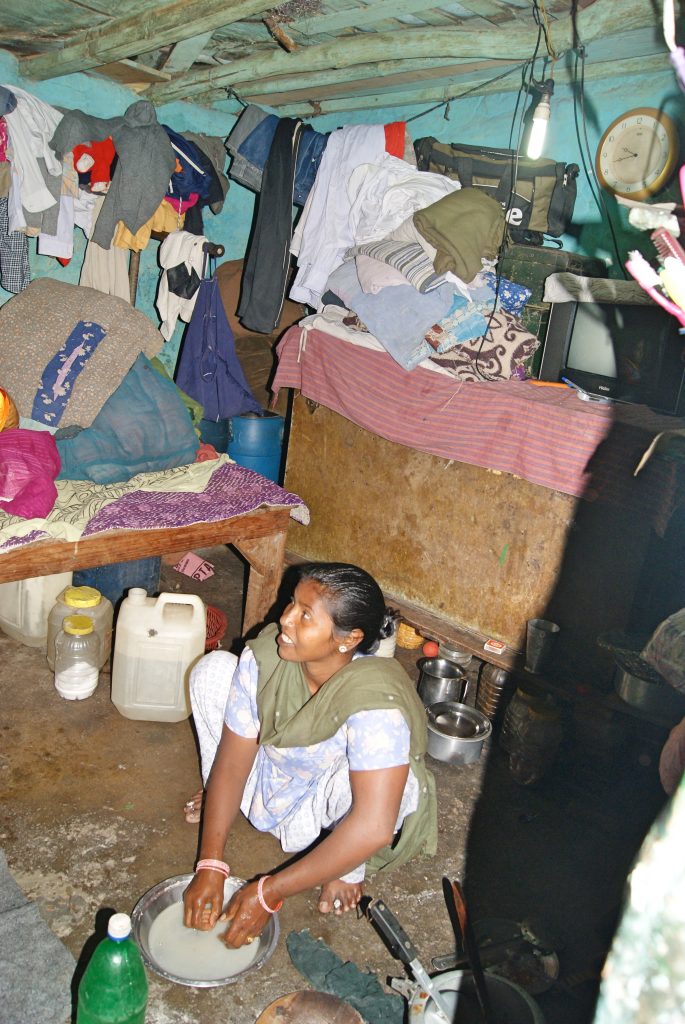
SONY DSC
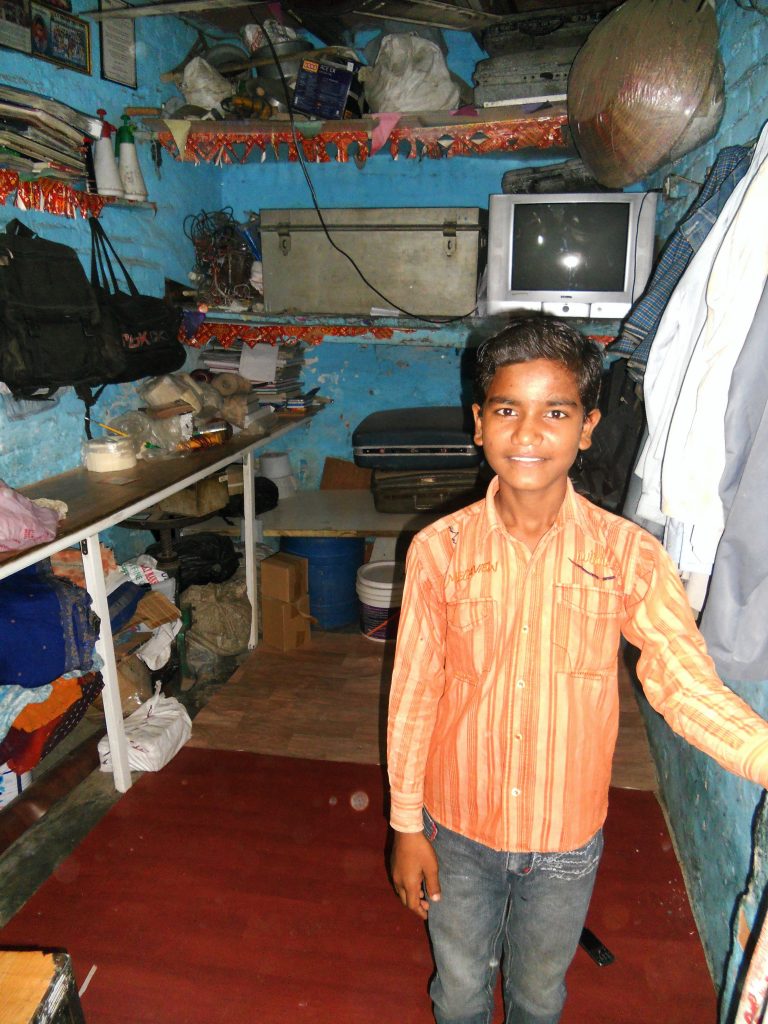
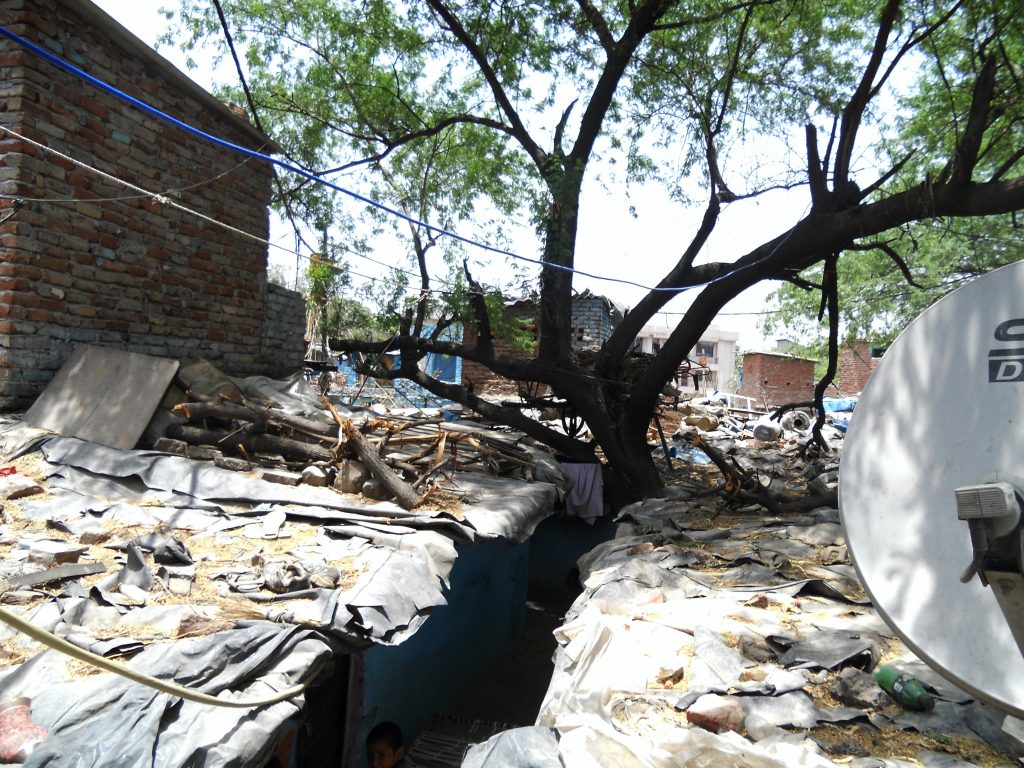
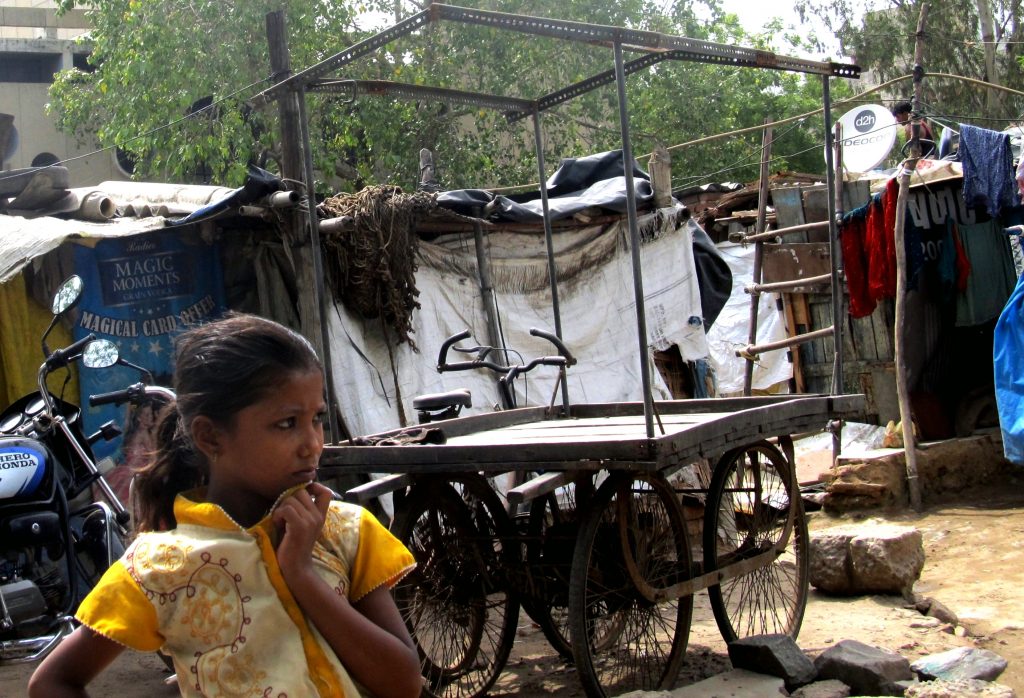

No matter how poor you are, TV is always something you will find money for. Nicholas Johnson is right in saying that all TV is educational but then what does it teach today?
In the times of 24 hours and innumerable channels there is a lot on offer. In tiny homes with a sole TV there is not much scope for parental or any kind of control. The preferred programmes are undoubtedly the plethora of soap operas that seem to have taken the place of the weekly movie outing that was once affordable. Today the big cinema halls with different ticket rates have been replaced by multiplexes where you pay the same for front or back row.
In yore years the back row was for the dating couples and the front row for what was know as the whistling viewers. Post movie day there was a week of processing what you had seen. And in yore years again Bollywood movies did have a social message. Gone are the days of tear jerkers!
Soap operas are family dramas that are a far cry from the reality of those who view them in slums. Nothing resembles the harsh reality of survival. They do provide a much needed escape but where escape is good once in a while, it can be nefarious when resorted to constantly.
Then there are cartoons that are often seen by children after much negotiation and even violent arguments. Some are innocuous but others can be violent.
There are movie channels, reality shows, music channels and even educational channels. Common to each is the clever interspersion of ads. No wonder that you find the most upmarket products in the poorest of homes as these are available in affordable pouches.
Many young slum kids learn their dancing and dress sense from the box. Not a bad thing some would say.
But too much of anything can be dangerous and when there is no control of any kind danger lurks in every image.
At Project Why we try and put things in perspective. The only means to do so is to give every child that comes to us the freedom to share her/his thoughts and desires with us allowing us to help her process it rationally. It is all about open communication.
TV or for that matter any information source is educational provided it is backed by processing and understanding.

by anouradha bakshi | Sep 27, 2016 | Uncategorized

You may be wondering why the illustration for this post is an ultrasound plate. The reason is that there exists no picture of the child whose story we tell.
Little Sonny was born a month or so ago to a beggar woman of the Kalka Temple. This was the mother’s 4th child, the eldest way in her late teens. Two of her children are special needs children and the husband passed away before Sonny was born. When the baby arrived and it was a boy, the mother was elated.
However one look at the child was enough to realise that the baby was born with Down Syndrome. No one had the heart to tell the mother. Would she have believed this? Perhaps not as Sonny was the ray of sunshine she held on to.
A few weeks later Sonny passed away. The reason given was an insect bite at night. He had gone to sleep alive and woke up dead. Maybe it was all for the best as a child like him had a very bleak future.
Had he been from a well-to-do family that a scan like the one above may have resulted in his being aborted.
He could also have been born in a caring family that would have done everything possible to make his life the best or to a family where he would have been shunned. But that was not the case.
Sonny is one of children born in India but never claimed by the land. They remain wandering souls that have fallen off the net and when they pass they often fade from the memories of those who gave them life as they are too busy in simply surviving.
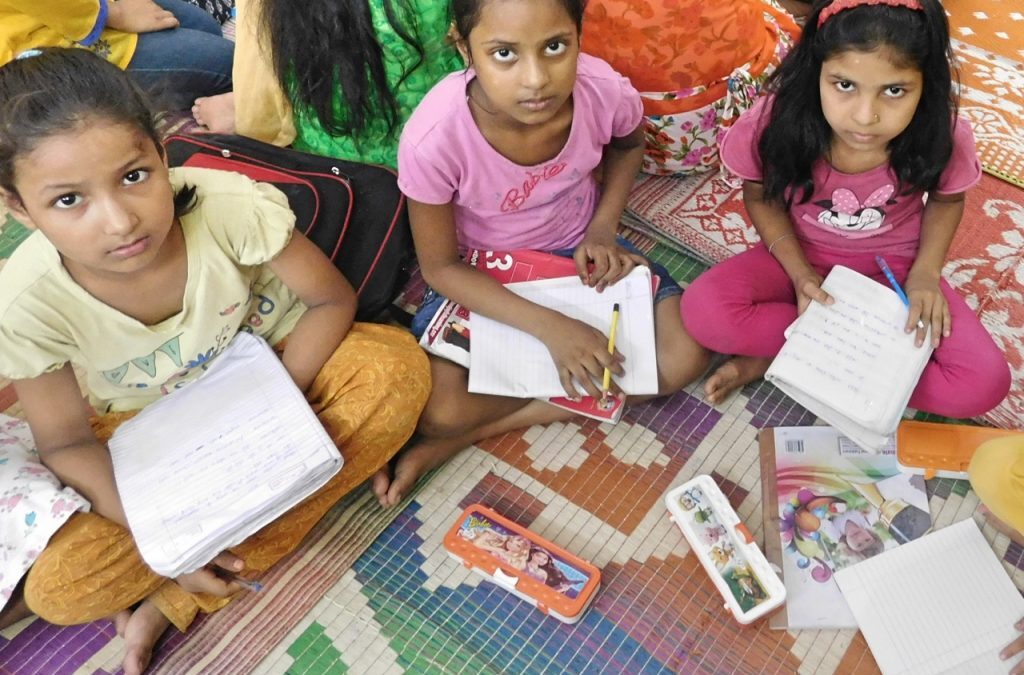
by anouradha bakshi | Sep 20, 2016 | Uncategorized

A recent UNESCO report states that India could be late by half a century in achieving its global education commitments. It would need to make fundamental changes in the education policy if it were to meet the 2030 goals. At present India is expected to achieve universal primary education in 2050, universal lower secondary education in 2060 and universal upper secondary education in 2085.
That education is the one and only road to transformation is indubitable. Education helps break the poverty cycle and hence should be given centre stage. But that is not the case; hence the delays un meeting the millennium goals.
If we are to go with the stated report then it will take another 34 years for ALL children in India to acceded to primary education.
Let us leave statistics alone and look at the human factor. What this means is that for many millions of children today primary education remains a dream. The reasons are many. From poorly run schools, to lack of teachers, to lack of motivation, to gender bias, to access to schools, to inclusiveness, to poverty etc. Each of this is redressable.
But time is a crucial factor and time is something that children do not have. They grow every minute and before even planning can be done, they have missed the coach.
It is imperative that immediate solutions are found and implemented.
One such solution is Project Why.
Education does not simply mean enrolment in a school. Only if the education is of quality will it help transform a life. In todays education scenario going to school alone does not suffice. What has come to be know as ‘shadow education’ – after school tuition, coaching, extra classes – is a essential to success. This comes at a price the poor cannot pay. This is further compounded by the fact that poor children often have illiterate parents who cannot provide any support.
It is over 1000 children that Project Why helps at no cost for the past 16 years. The fact that the problem is not only real but calamitous is amply demonstrated by the large number of children who have come to Project Why after 3, 4, 5 and even more years of sitting on a school bench and who could barely read or write. Such children drop out often by the end of primary school or when they face their first real exam.
The flip side is that the same child who would have dropped out and been considered a failure needs only a little help to make up for lost years and reach the top of her class. We have many such children. That is what makes the situation so tragic.
Project Why is a minuscule effort but one that bears fruits. At least for these 1000 children education is a reality.

by anouradha bakshi | Sep 15, 2016 | Uncategorized

India has the largest number of stunted children in the world reveals a recent study. For Project Why that is one too many! The main reasons are: lack of toilets, dirty water and poor hygiene. In urban slums and even lower middle class colonies that is a reality. Narrow lanes, unchecked construction and overcrowding spell disaster. Even in the area where Project Why’s main office is located and where property is in 7 or even 8 figures, clean and drain water pipes get mixed and a foul smelling grey water runs in your taps. The reason being unchecked construction where pipes are dug ad infinitum by unskilled workers.
In slums where piped water does not exist, drinking water is collected in recipients of all kind from taps or water trucks. Then it is stored often in unhygienic condition and used for the next 24 hours.
Toilets are scarce. Those that exist are filthy. A brave Project Why teacher undertook the survey of local public toilets and was sick for two days. They were beyond filthy. The problem often was lack of water and budgets for cleaning.
It all comes down to planning.
What no one realised is that the dirty water is drunk by children below 2 who get stunted for life. The damage is irreversible. These children grow to be physically and intellectually weaker than their peers. Some do not make it to age 2 as they succumb to one of the many waterborne diseases. Death is rarer in cities where medical facilities are available but a stunted child is marked forever. Children cannot wait for long term solutions.
The way out is to educate people about the importance of water, about storing it in hygienic conditions, about washing hands before diving in the drinking water pot and about not wasting a drop.
At Project Why we do that relentlessly. Saturday is hand washing day. Regular competitions on water related themes help the children com up with solutions. Project Why even held a photo workshop where the theme was respect and one of the sub topics was RESPECT WATER. Here are some of the pictures taken by the children.
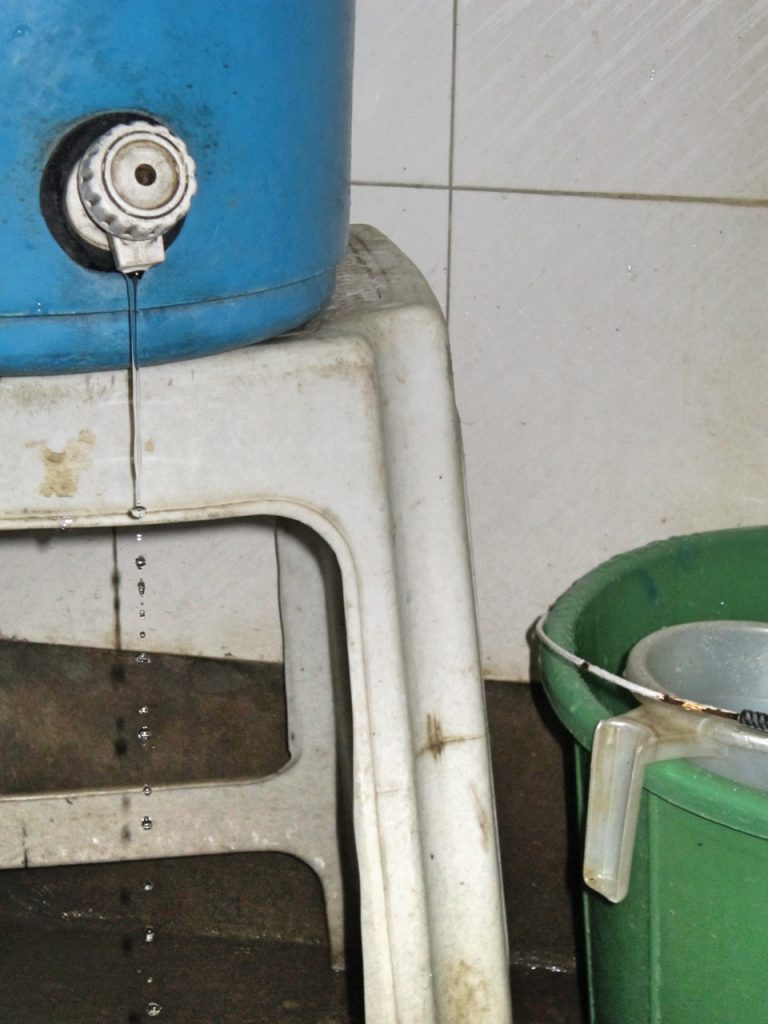
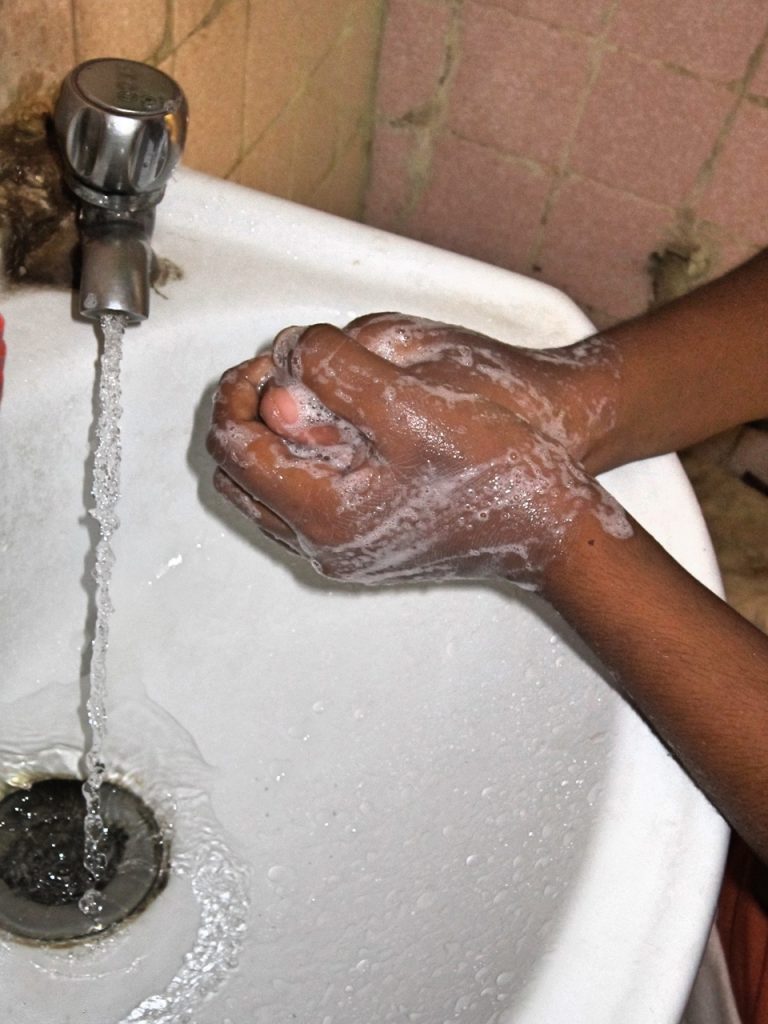
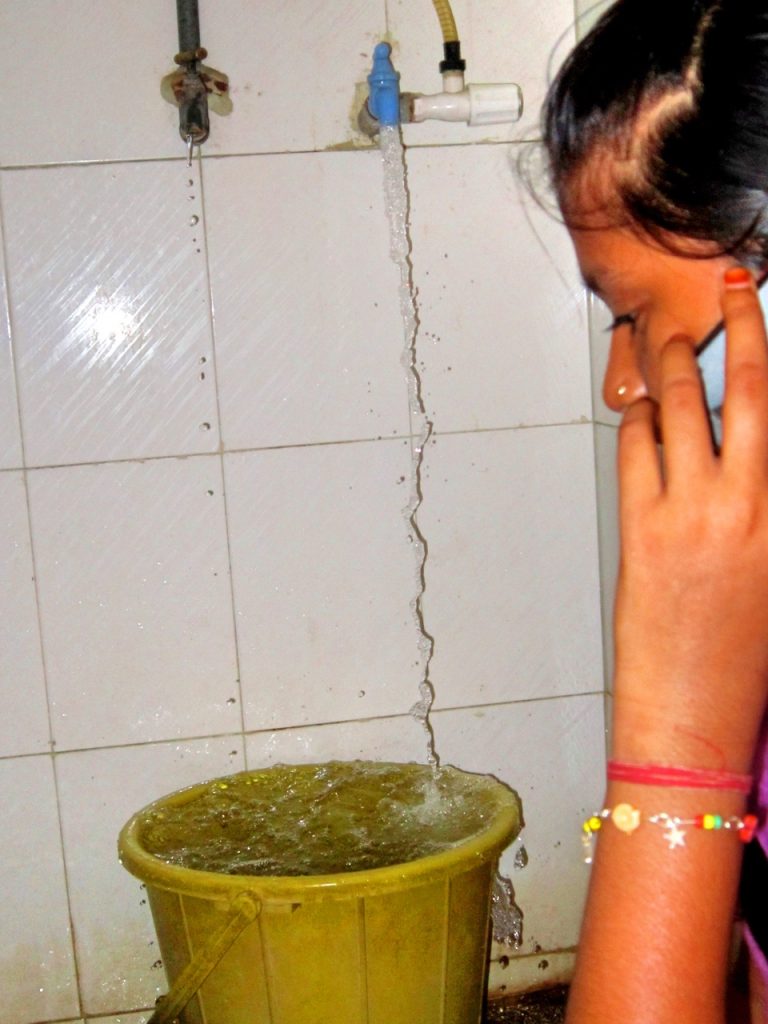
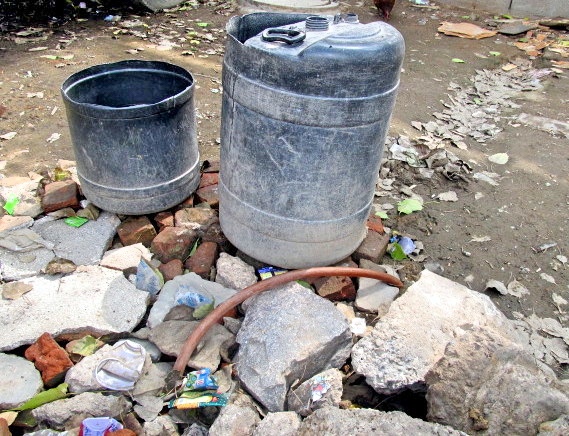
Gayatri
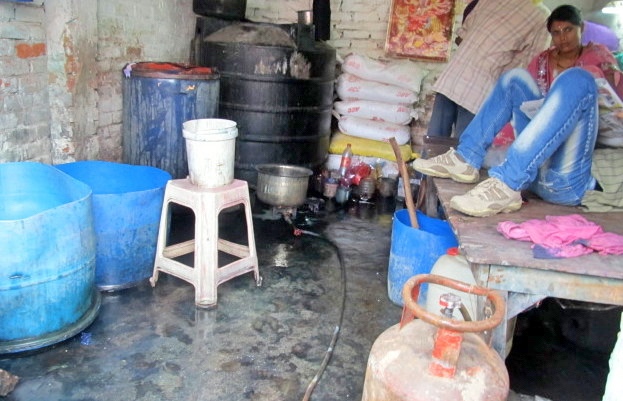
The workshop helped children experience reality and we hope they will carry the message forward.
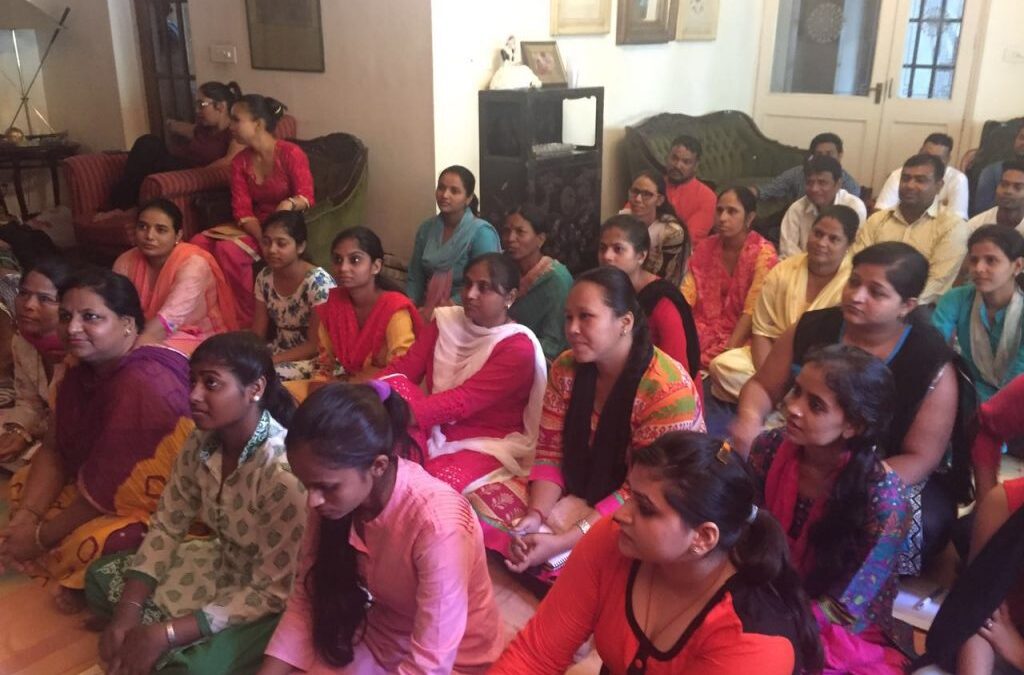
by anouradha bakshi | Sep 6, 2016 | Uncategorized
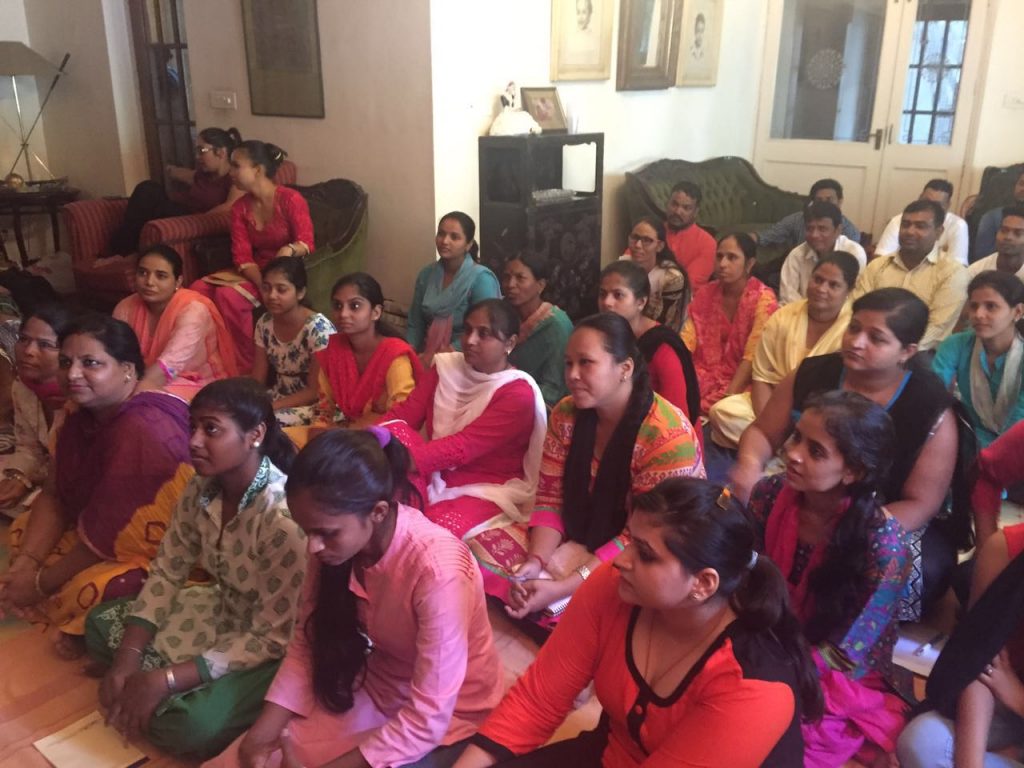
When a friend offered to run a healing workshop for Project Why staff so that they in turn could share it with the children we were a little hesitant. The reason being the multitude of faiths and beliefs followed by them. However we had faith in the sixteen years of sharing our views and beliefs and decided to go for it with the caveat of allowing individuals to opt out if they so wished.
Needless to say NO ONE opted out!
This experience, a first for Project Why, was most rewarding and made us wonder why we had not thought of it before. It was deeply empowering and helped everyone address situations and problems that were upsetting them. It also brought a feeling of peace, oneness and above all confidence. The staff enjoyed the experience and has promised to share it with their students.
It is a proud moment for Project Why and a validation of its efforts to bring people together and celebrate difference.
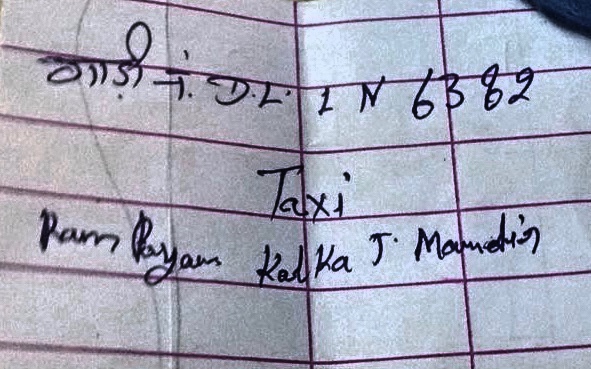
by anouradha bakshi | Aug 30, 2016 | Uncategorized

A young girl was victim of the ubiquitous hit and run syndrome that is a familiar occurrence in cities. Most get reported. Some make front page if a ‘celebrity’ or ‘privileged’ is driving a ‘swanky’ car!
There are some hit and run cases that never make any page. Most often only those close to the victim are the sole witnesses of the ghastly act. Last week a young girl was hit by a car as she crossed the road after finishing class. She was a student of the pilot project run by Project Why for the children of beggars at the Kalkaji Temple. Little S was in many ways the one who by her sheer tenacity compelled us to begin classes. She is alive but her leg has been crushed badly. She is in hospital and has been operated upon.
Her mother A delivered a child just six days before the accident happened yet she was the one who had to ferry the child in an auto to the trauma centre. The only ‘proof’ of the accident is the car number hurriedly copied by a kind stall owner. A is also the one who has been banging on the doors of justice but has not been heard. The police are not interested in a young beggar child and her beggar family. The father remains at the little girl’s side keeping silent vigil. The mother looks after the newborn and the other children and before any brow lifts in despair, A had her tubes tied at a camp. The baby came after the surgery.
At present A lives in the women shelter where she delivered the baby. Habitually the family lives on the ‘street’. Most beggars sleep where they beg.
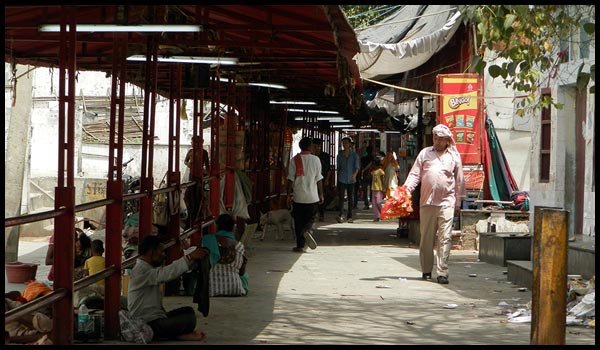
If you look at the picture above carefully you will see bags and bundles. These are the packed up homes of the very beggars you see. After working hours, they set up house. If you were to pass by early morning you would see them brushing their teeth and sending kids off to school.
This is A and S’s home. This is where S would come back to recover from surgery. Most probably she will be taken to the women’s night shelter but then kept away from her father, the one who sat with her throughout the hospital ordeal. When will she be able to return to school is a question we all ask. We will fight day and night to ensure she returns to school as early as possible.
Come to think of it, in the given circumstances, a maimed child is likely to earn more ‘begging’. And is it not the ‘family’ business; so all within the new child labour laws.
S is just one of umpteen children who beg. In some cases like Arati’s or many of the women in the night shelter, they did not chose to beg but were driven to it by a series of unfortunate circumstances. In some cases they lost their homes as metro stations or malls needed space. Not having all the documents required they were not ‘eligible’ for any alternative scheme so found whatever alternative they could and began their descent to hell. Begging was the last resort. In some cases women are abandoned by husbands and left to seek shelter and beg for survival. That was the story of many of the women in the shelter some having just had babies. They eat at the numerous religious feedings. On days when there is no free food, they beg just enough to buy a meal. Their future seems hopeless.
And yet amidst all this squalor you meet R. R is an imposing and confident woman who is ‘in charge’ of the women’s shelter. She is literate and runs a small tea stall just outside the shelter. She recounts how she too was a beggar many years ago and would have remained one had she not been helped by an organisation that sent her to a residential school where she got educated. She came back and married another vendor and has one son she is determined to educate. She has never looked back.
Listening to her story gives hope, hope for these children who study for a few hours with us. Maybe some of them will follow R’s steps.
We at Project Why will walk the extra mile to ensure that.
S was the victim of a hit and run. We do hope to trace the driver and ensure that the family is helped.

This is Arati with one of her kids!
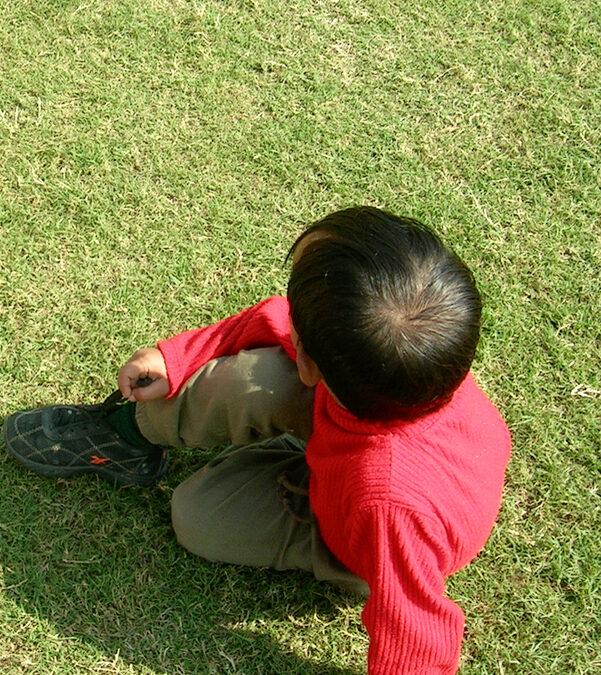
by anouradha bakshi | Aug 23, 2016 | Uncategorized
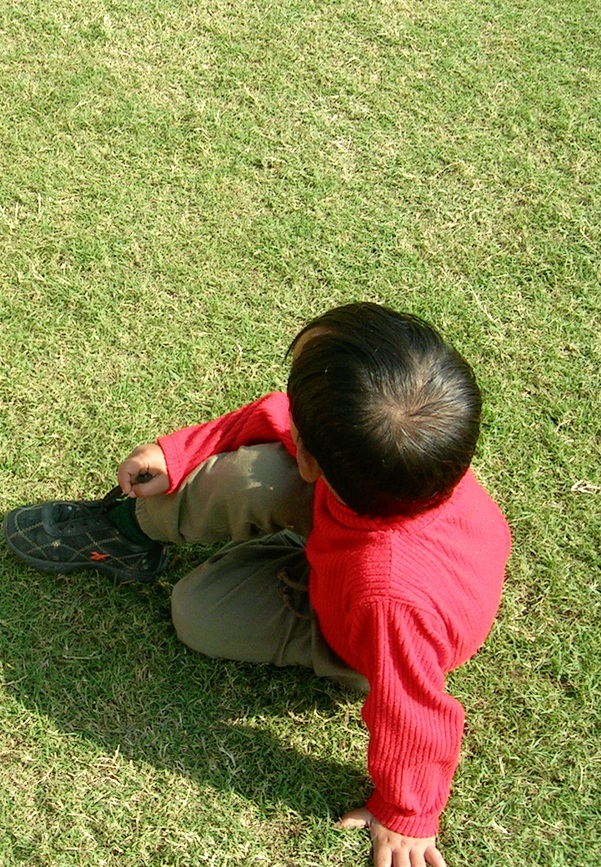
Government to enlist gurus for organ donation campaign is a recent headline. The article goes on to say: “The health ministry plans to rope in spiritual gurus to help dispel myths about organ donation“.
This is undoubtedly a good move. Organ donation is a noble cause but so are education, child marriage, gender equality, child abuse and far too many more.
One often wonders why spiritual leaders of all faiths do not raise social issues as theirs is a voice that is always heard. In today’s disturbed world they hold the power to change things.
This is a statement made with responsibility as it is based on experience. Over the years we at Project Why have witnessed time and again the power of religious percepts. Nothing takes precedence over the rituals and religious traditions not even the child’s medical need let alone the school fee.
The importance of religious customs is deeply embedded in the lives of slum dwellers who spend enormous amount of money on ensuring that every one is respected even if money has to be borrowed at mind boggling rates.
In villages in Bihar it is, we are told, customary to ‘feed’ the whole village for three days after the demise of a close relative. We were horrified to learn that a parent who had barely enough money to survive had put up a feeding stall in the slum cluster and was ‘feeding’ everyone. Needless to say he had taken huge loans. When asked later why did he do this, he replied that it was a matter of honour and if he did not comply he would be ostracized.
Over the years we have rarely succeeded in getting people to alter deeply rooted traditions. All logic and even threat fails. So people give huge dowries, marry their girls early and so on. However if a religious leader said the same, things might be different.
At Project Why we hope that the support of such spiritual leaders will be sought for the social change that is paramount to a better world.

by anouradha bakshi | Aug 16, 2016 | Children, learning
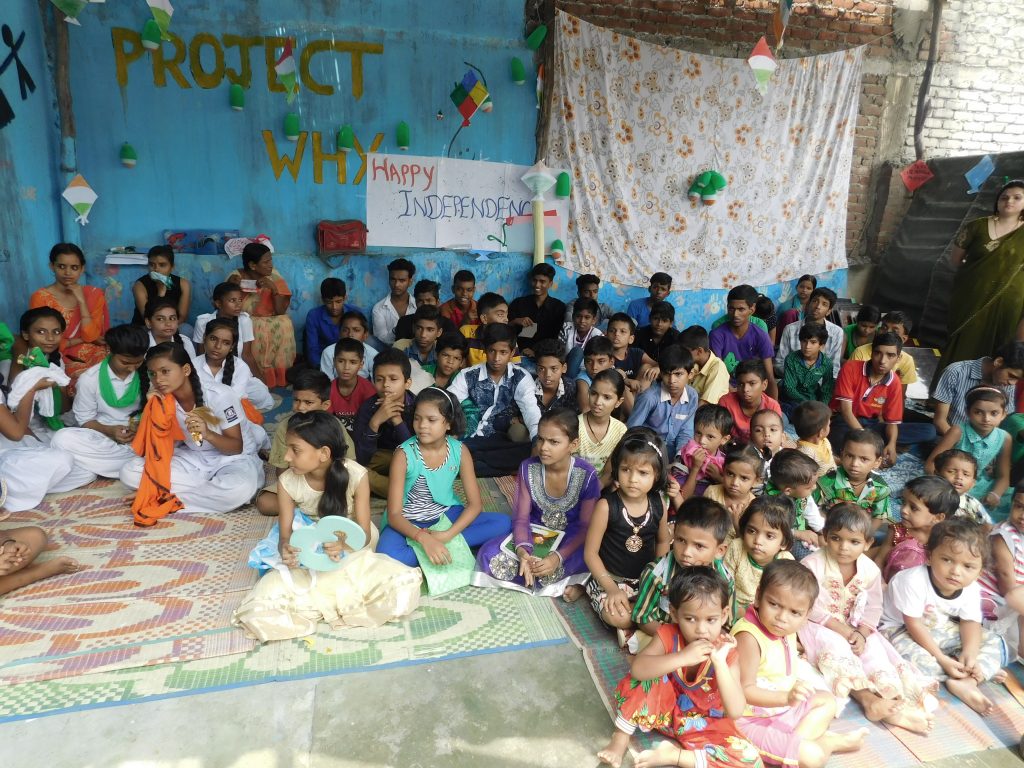

Project Why children celebrated Independence Day! There was the flag hoisting in all centres, the regulatory speeches, the patriotic songs and of course a lot of Bollywood dancing. The children enjoyed themselves and the celebrations ended with the ubiquitous all time favourite: the samosa!
Watching the children with their innocent faces and trusting eyes was moving and bittersweet; even if one spoke of education and its importance in accessing a better future one could not help noticing the stark difference between these children and their more privileged peers. But that morning, be it on the roof of a temporary structure erected on a garbage dump amidst factories spewing toxic smokes, or on yet another roof in a crowded slum or on the banks of the Yamuna surrounded by vegetables fields, for those magic moments every dream was possible.
It was later, after the children had gone back home with memories to share and the adults had returned to their everyday life, that reality struck.
Project Why has been committed from its very inception to doing every thing in its power and more to help these children break all glass ceilings, but it would be naive to think that this will be possible for all as there are too many obstacles in this race. And yet to reassure us and make sure we carry on, miracles happen when one child breaks out of the cycle of poverty in which s/he was born and succeeds.
We remain aware that Project Why is a drop in the ocean and that there are too many children that may just drown.
And this is a reality we must accept in the land we live in. Over 1 lakh schools in India have just 1 teacher was a recent headline that made one shudder. It means that 100000 schools function with just one person who, as the article said, doubles up as administrator, clerk, caretaker, midday meal servers, nurse and sundry crisis manager. Such souls need to be saluted as they are wonder persons!
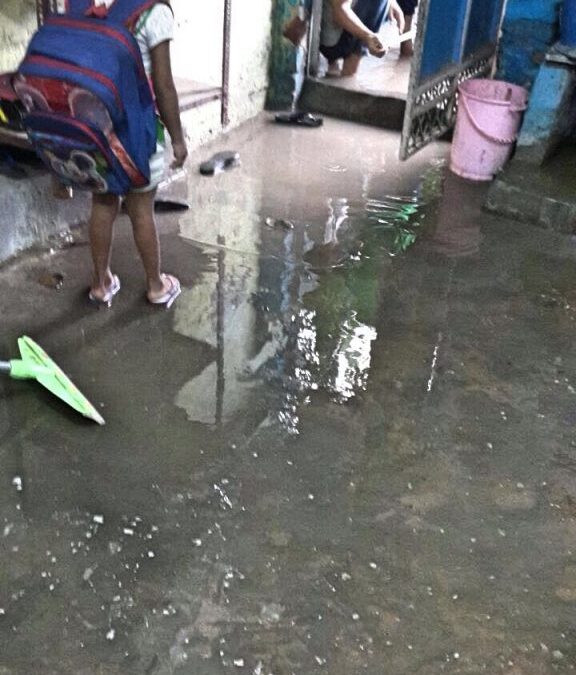
by anouradha bakshi | Aug 9, 2016 | Uncategorized
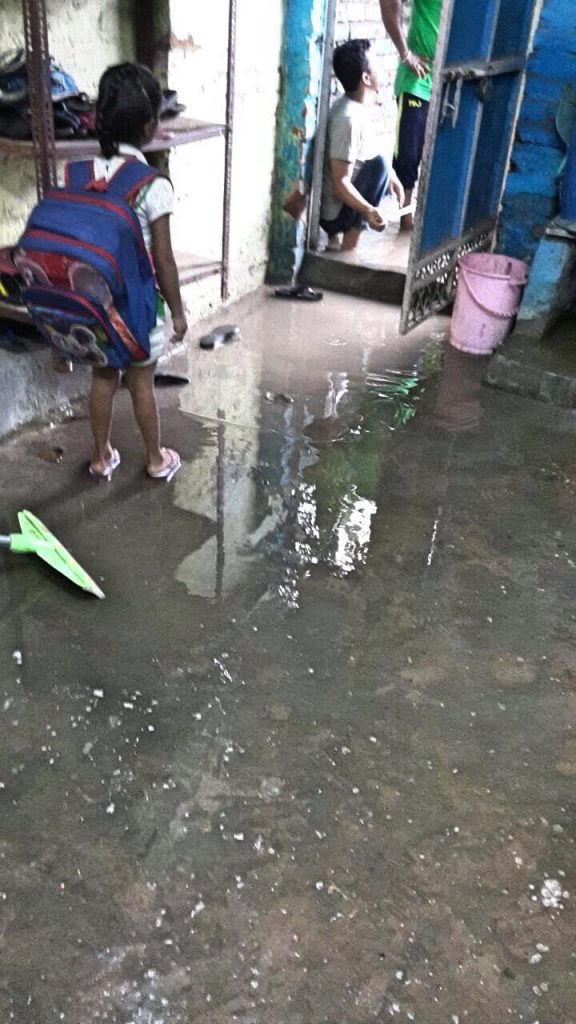
The rains have created havoc in the city for the past days and yet nothing unpredictable as it is monsoon time and a good monsoon is what everyone hopes for. Vladimir Nabokov said: “Do not be angry with the rain; it simply does not know how to fall upwards.” And fall it does, transforming the world as we know it in a jiffy.
The picture above is our Okhla classroom. Sure the roof was temporarily patched and is holding, but water is seeping through the cracks in the wall and even from outside as here too the word ‘drainage’ is not part of any lexicon.
On rainy days children and staff spend most of the time clearing the water away as best they can. No one asks for a day off. What is needed is a a dry spot to lay out the mats and begin class.
This is but a tiny example of how just one heavy spell of rain can alter one’s day.
The reason is poor construction and absence of planning. Even the best of us forget to plan for the proverbial ‘rainy day’.
Last week’s rain saw the city come to a halt as roads got inundated and one could only wait for the water to recede.
But life goes on and people brave all odds to ensure that it does. Our kids live in homes that bear the brunt of the rain’s fury. Their homes being low lying means they get flooded. School uniforms do not dry and thus they miss school, not to speak of the soaked bedding that means sleeping on the hard floor. But it is all part of the game of life.
Do we ever give a thought of how many challenges are met by those we often take for granted to ensure that our lives do not get affected by the rains?
Do give a thought to those who make our life better, whether the lady who comes to help in our homes or the man who cleans our clogged drain or even the electrician who repairs the lights blown because of the rains.
As for Project Why teachers, they too brave all odds to come and teach the children.

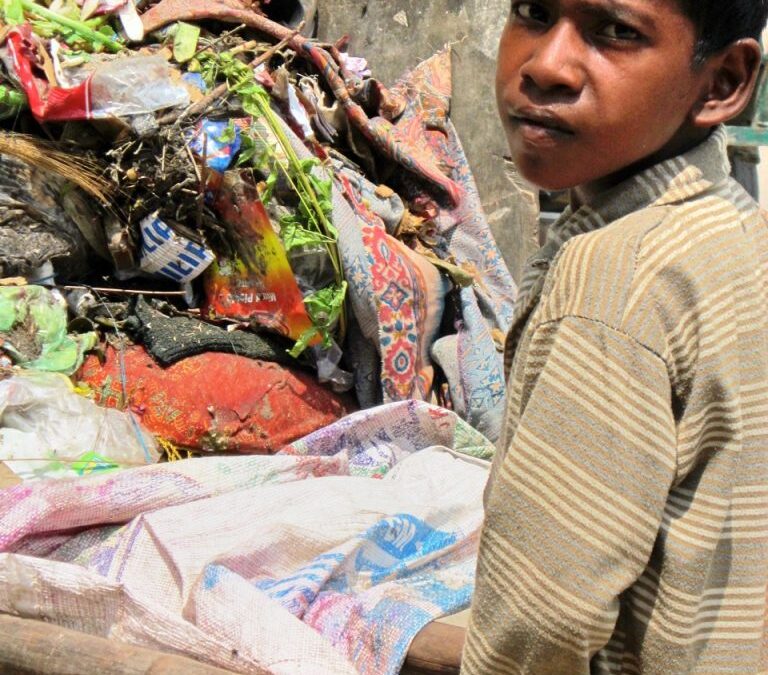
by anouradha bakshi | Aug 2, 2016 | Uncategorized
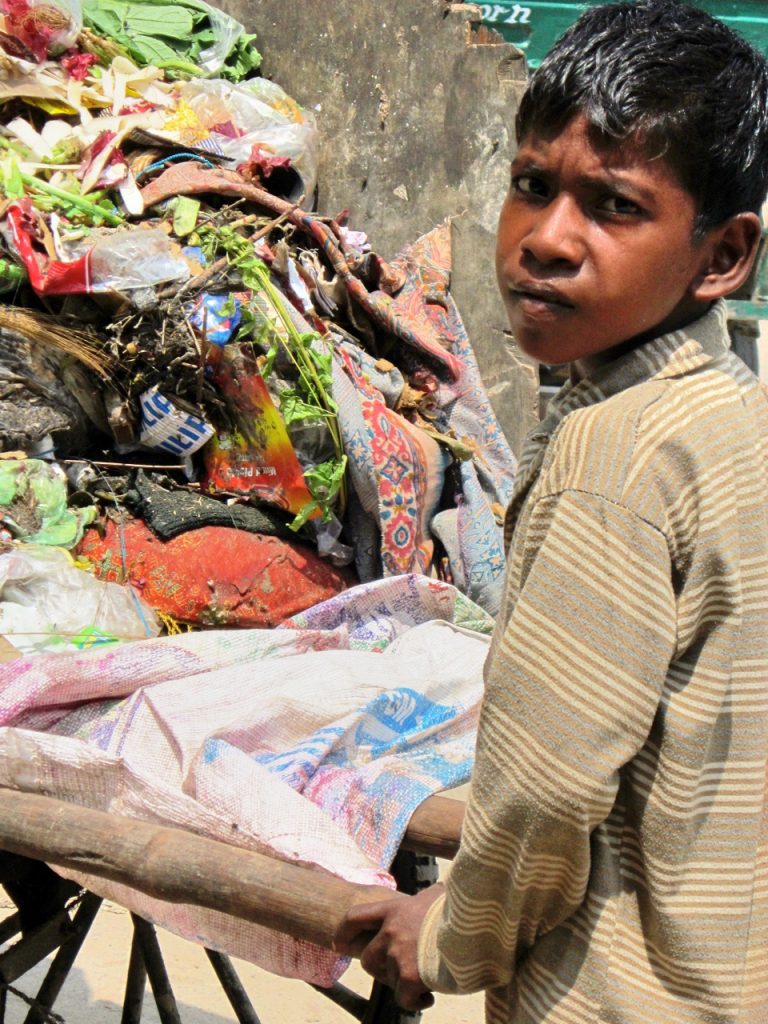
The Upper House of the India Parliament passed a Bill to Amend the Child Labour Act 1986. The amendment prohibits the engagement of children below the age of 14 in all occupations and processes so that they are able to enjoy their fundamental right to education. It should be a cause of celebration for the likes of us at Project Why. Child labour in any form is abhorrent and reprehensible.
The celebration is short lived when one sees the caveat that defeats the intent. Although it abolishes child labour in any form it introduces a proviso that allows children under 14 to work in family enterprises. Nothing alarming you would say keeping thinking of your own child and your family enterprise but this means that children can help families after and before school, our kids do help with home chores don’t they?
But what if your family business is rolling beedis or agarbattis, making bangles, packing and sticking labels or any of the umpteen of labour sub-contracted to families on a per piece basis. So the more you make the more you earn and hence the tiniest hands are usefully productive. Many parents of Project Why children engage in such work, the easiest to access.
Often children who ‘help’ in such work spend hours before or after school helping the families. In the early days of the Project Why’s Yamuna centre parents would happily come to class and ask for their child as (s)he was ‘needed’ to help pick vegetables. It took us some time to convince them to stop. Mercifully they have.
At that time we thought law was on our side but today it is not. True there is the before or after school but is making a child work acceptable, that is the question we must ask.
Attending school in itself is sufficient ‘work’ for any child. A child who has spent some hours rolling beedis or making bangles is already tired and will not be able to concentrate in school and hence will perform poorly. The time when (s)he drops out will not be far as the choice between work and school is a foregone decision.
This approach seems to imply that the best for a child is to carry on its family’s profession and maintain status quo.
But every child has a right to dream and dream BIG. That is what we believe at Project Why and strive to achieve.
The best example is our very own Sanjay who was born on the street to a family of gypsy ironmongers, who was a Project Why student, then teacher and then doors opened and he is now an International Ramp Model. That is because his family allowed him to get an education and work in another profession. Once the gates open, the sky is the limit so why shut the door on India’s children dreams.
Please join Project Why on its
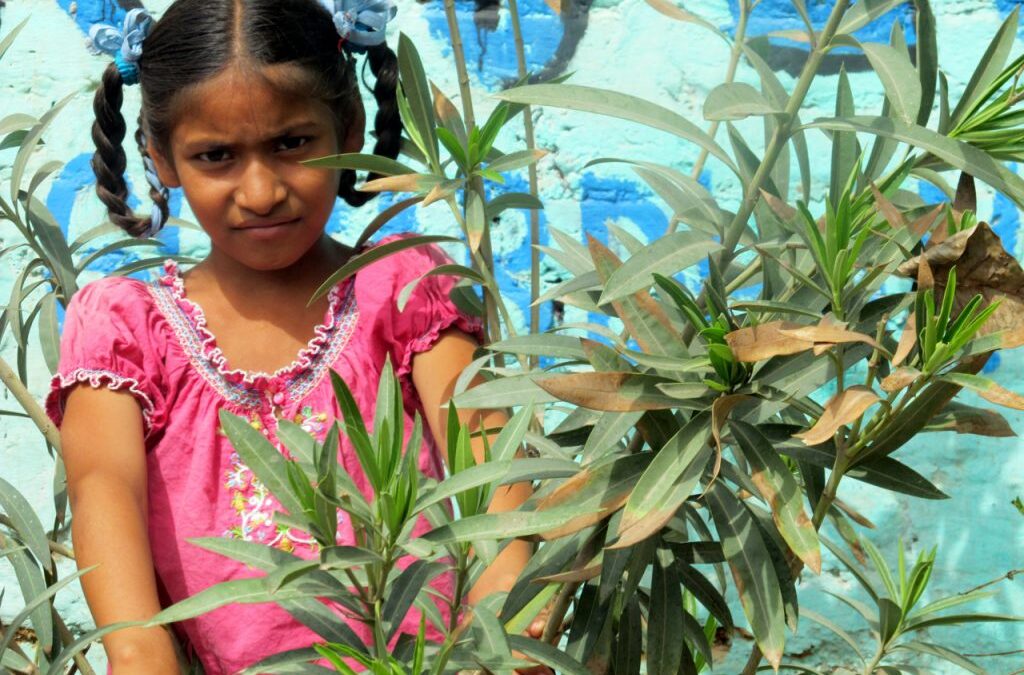
by anouradha bakshi | Jul 26, 2016 | Uncategorized

Kajal
Kid Speak is cute. There have been TV shows like “Kids Say the Darndest Things’” or books like “Children’s Letters to God” that always delight us and warm our hearts. But the kind of Kid Speak we share today is the one that puts a lump in your throat and leaves you feeling heart broken and helpless.
I have made friends with school going children who live in the open at the Kalka Temple. Their parents are beggars. At night the family rolls out their beds under a narrow tin awning and in the day the same is rolled away and placed on some ledge or other with all the family’s belongings including the precious school bag. When asked why he had not gone to school, a little boy replied, “mama had to take my sister to the doctor. She has asked me to look after the bedding and make sure it does not get wet if it rains.” It was indeed a very cloudy day.
I was further enlightened when another child who had not gone to school said, ”We do not go to school when it rains as our uniforms get wet and would not dry for the next day.” I came to know that most kids have just one set of uniforms and thus the need of it drying is critical.
When I asked a little boy if he wanted toys to play with I was told almost dismissively,”I only like to study!” Do these kids intuitively know that learning may make a difference in their lives?
When I enquired about a little girl who had a high fever I was told that she had gone to school. Before I could react another kid told me, ”You see, if she had stayed here she would have been running around; in school she will be able to rest.” Yet another lesson.
These children struggle to survive with whatever dignity they can muster. It is touching to see how a mother spends that little bit of extra time tying the ribbons in the hair of her daughter as she readies her for school on a open stretch of road or how she goes haring down to see who had brought in the tastiest offering so that the child can have a better breakfast (people bring food early mornings as offerings to the deity).
I was surprised to see a beggar woman sitting on a step with het two school going children and holding a copy book and a pencil. She was helping her kids with their homework. I asked her if she had been to school and she proudly answered, ”I have studied till class III!”.
One wonders what brought her to where she is now.
To many of us, beggars are the pesky children that knock at our car window at red lights. But that is not who they really are. They are all people with a story, a story that needs to be heard.To know more about ‘beggars’ do read this article: Oh, that pesky Beggar…why doesn’t the Police take him away?
We at Project Why are working on getting these children the extra education they need.
Hope you will join us!
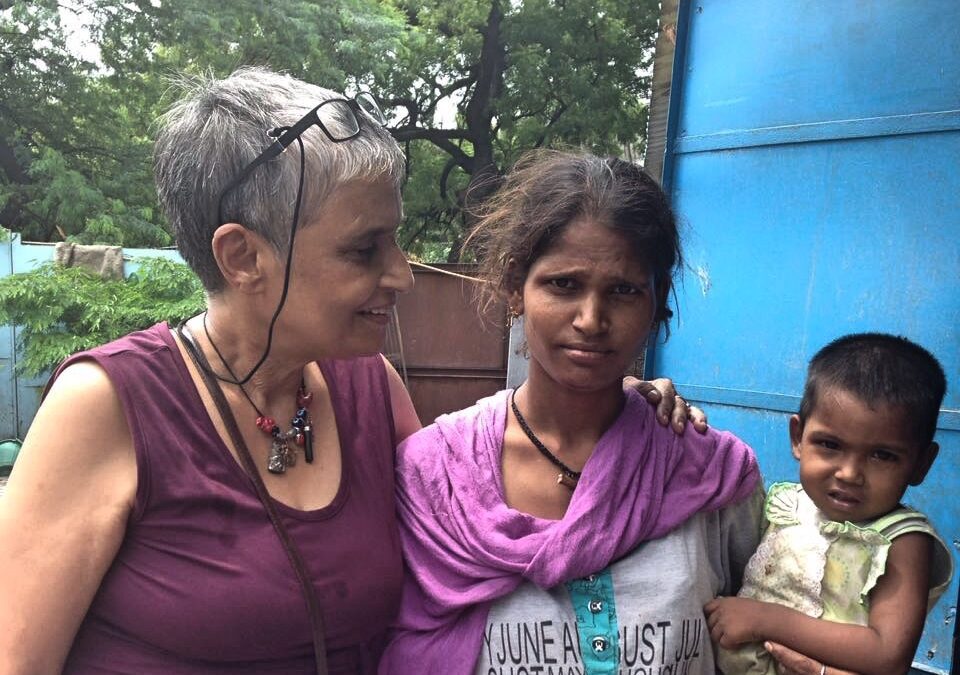
by anouradha bakshi | Jul 19, 2016 | Uncategorized

This week’s blog has to be written in first person as it symbolises the very spirit of Project Why. For the past weeks as we set out to ‘makeover’ Project Why to make it presentable to a wider audience I have been asked the question about whether we want to increase our numbers and the answer has been a firm no! “Never say never” to quote Dickens’s I should know more than anyone else as this has been the silent maxim we have followed in our quest to answer why’s. So my answer should have been worded differently: No, unless the need arises.
For the past six weeks I have been doing a daily pilgrimage to the Kalka Temple. For those who have never been to this temple it is difficult to imagine the surroundings. To reach the sancto sanctorum you have to wade through absolute filth that can range from remnants of food to dog and even human excrement; you need to navigate the sleeping bodies of beggars who lie helter skelter; you have to ward off the millions of flies that attack you. But faith conquers all and I have never felt disturbed by any of this.
What has disturbed me deeply though are the number of children of school going age that run around the place. In the morning you do meet some all dressed up in their school uniforms being taken to school by their parents but there are still too many loitering around the whole day.
You have to know Project Why to understand that we, or rather I, could not remain a mute spectator or be deterred by the cynical comment of a few. Something needs to be done to help these children. It took me no time to find out that the school- going kids had no after school support. There seemed to have been someone once but ‘she’ left and ‘she’ charged money was what one parent told me.
When I asked whether they would like us to teach the children the answer was an overwhelming yes from both parents and teachers. I then asked one mother whether we would find some place and she immediately said she would do so. I was touched by her enthusiasm but a little , too. Imagine my surprise when the very next day she came to me beaming informing me that she had talked to the person in charge of the night shelter and that the person had agreed.
From that day, every morning I am met by the children who often bring more children, all willing to attend the classes they want us to hold. I feel a tad ashamed at not having acted yet, but the process is on and if all goes well, we could begin soon. The question of not doing so does not arise. As I have always believed and stated Project Why is not ‘to question why but to do and die’.
That is what we have always been and would like to be for times to come.
We have been asked why we do not have a three year activities plan? The answer is simple: because we do not know what and when the next why will come our way.
I hope that all those who have know and care for Project Why understand what I mean.
|
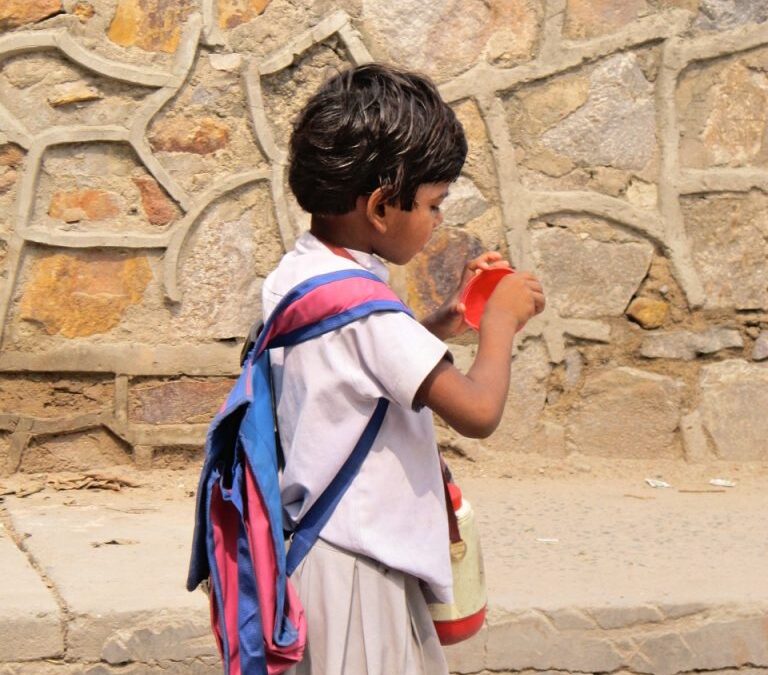
by anouradha bakshi | Jul 12, 2016 | Children
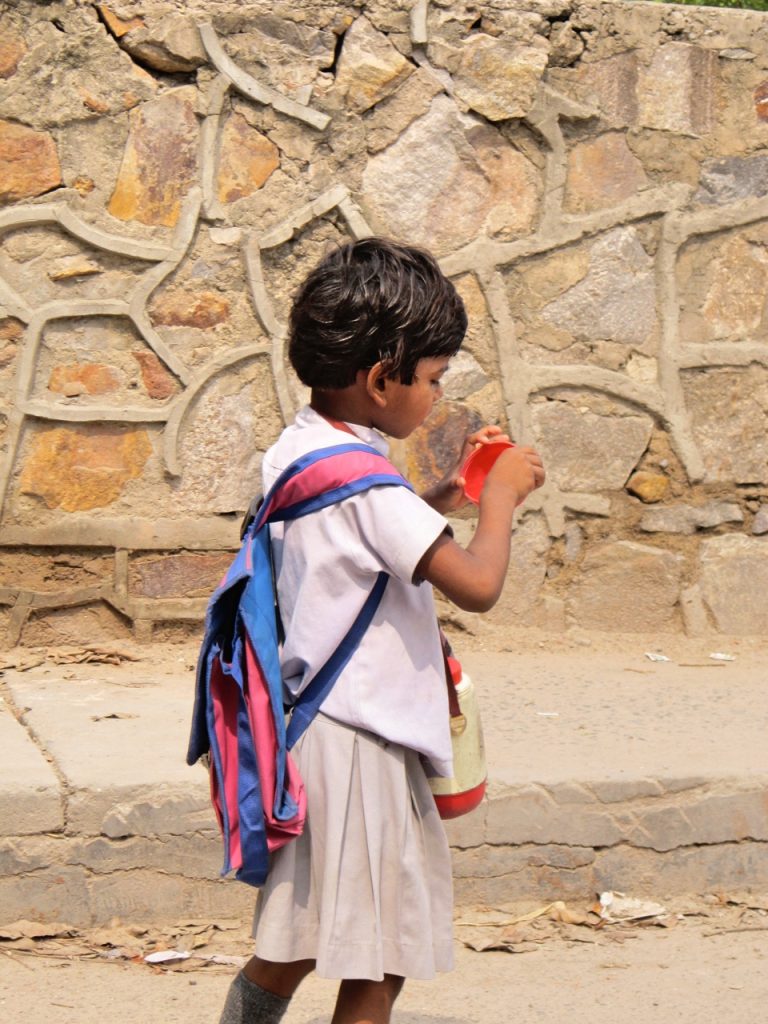
Statistics show that over 8000 children get raped in India every year. Wonder how many get sexually abused and yet the state is unwilling to include sex education in schools. Perhaps it is because it is thought that this would not make a difference.
An incident occurred recently and showed how well planned, age appropriate and straightforward sex education could contain this shameful crime.
A young seven year old who was born and brought up outside India and thus had been taught age appropriate sexual education reacted firmly when he felt that that his body was being ‘invaded’ . Actually it was far from that as he was just being asked to have a bath and he did not want to but to his mind it was his body and we respect that thought. In ‘good touch bad touch’ classes young children are taught to take ownership of their bodies and can only be touched if it OK with them. This very simple lesson could save many children from abuse. Abusers play on fear and silence, the moment these are taken away the perpetrator loses his power.
These lessons should be taught in schools and part of the curriculum. But that is not the case in India.
Good Touch Bad Touch may be taught in schools for the privileged that have counsellors. Classes are run by professionals but came at a price. And above all parents are aware and thus able to help the child. But that is not the case in state run schools and poor homes where sex is taboo.
Child abuse is not confined to the odd criminal deranged mind. These exist but the real abuse comes from within the homes or the neighbourhood where a firm NO can do the trick.
How long will children have to wait and how many more children will be abused before the penny drops.













































